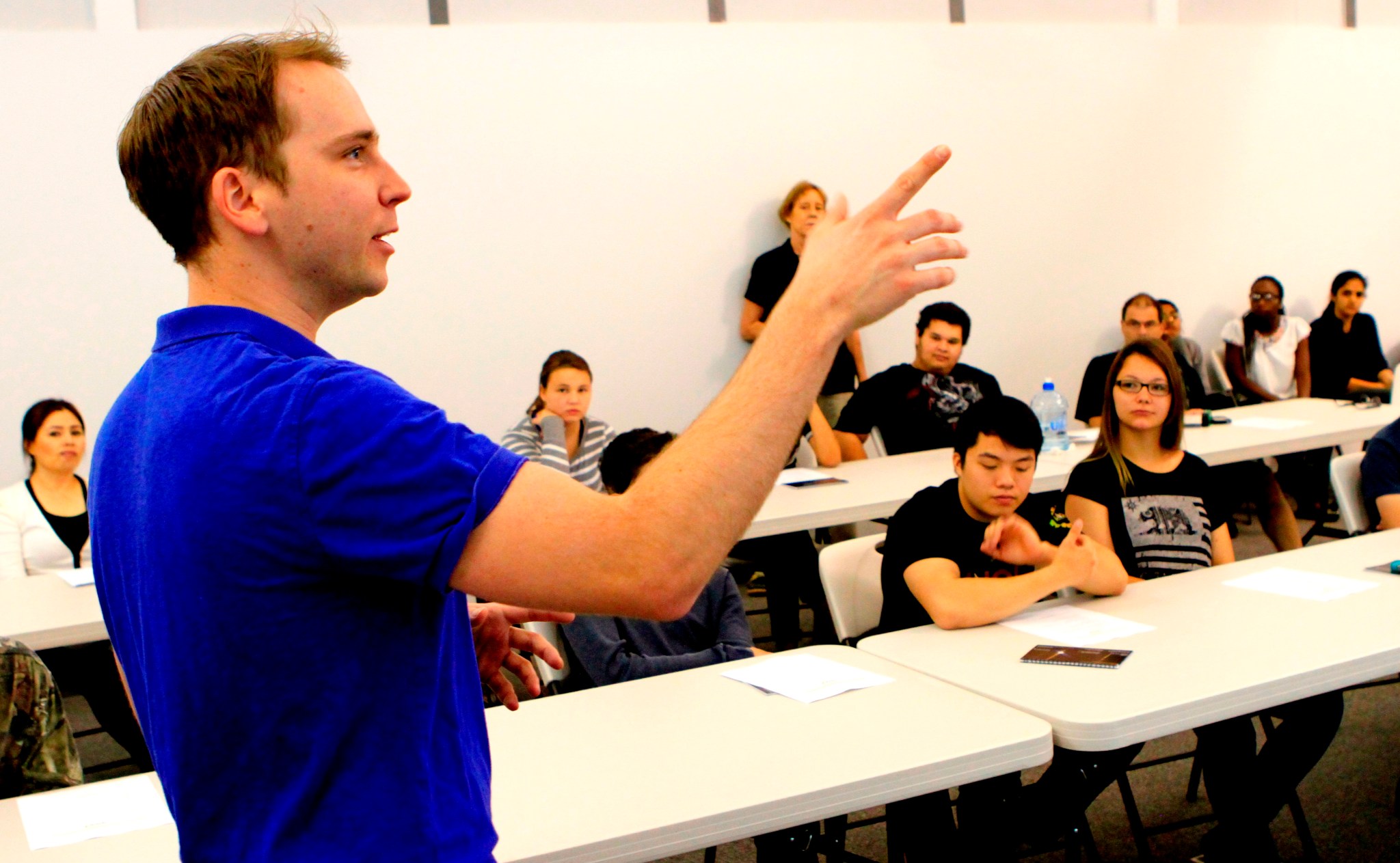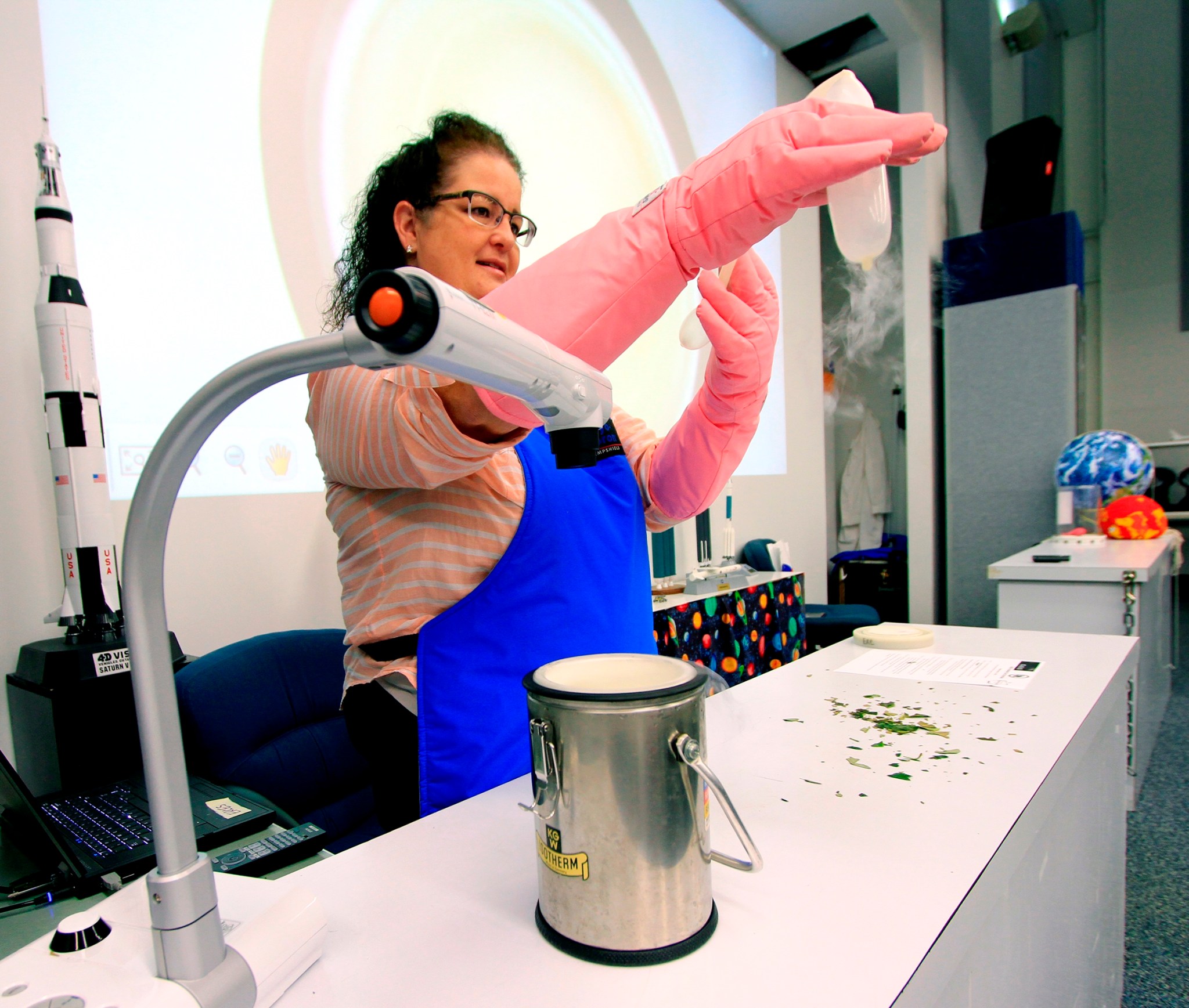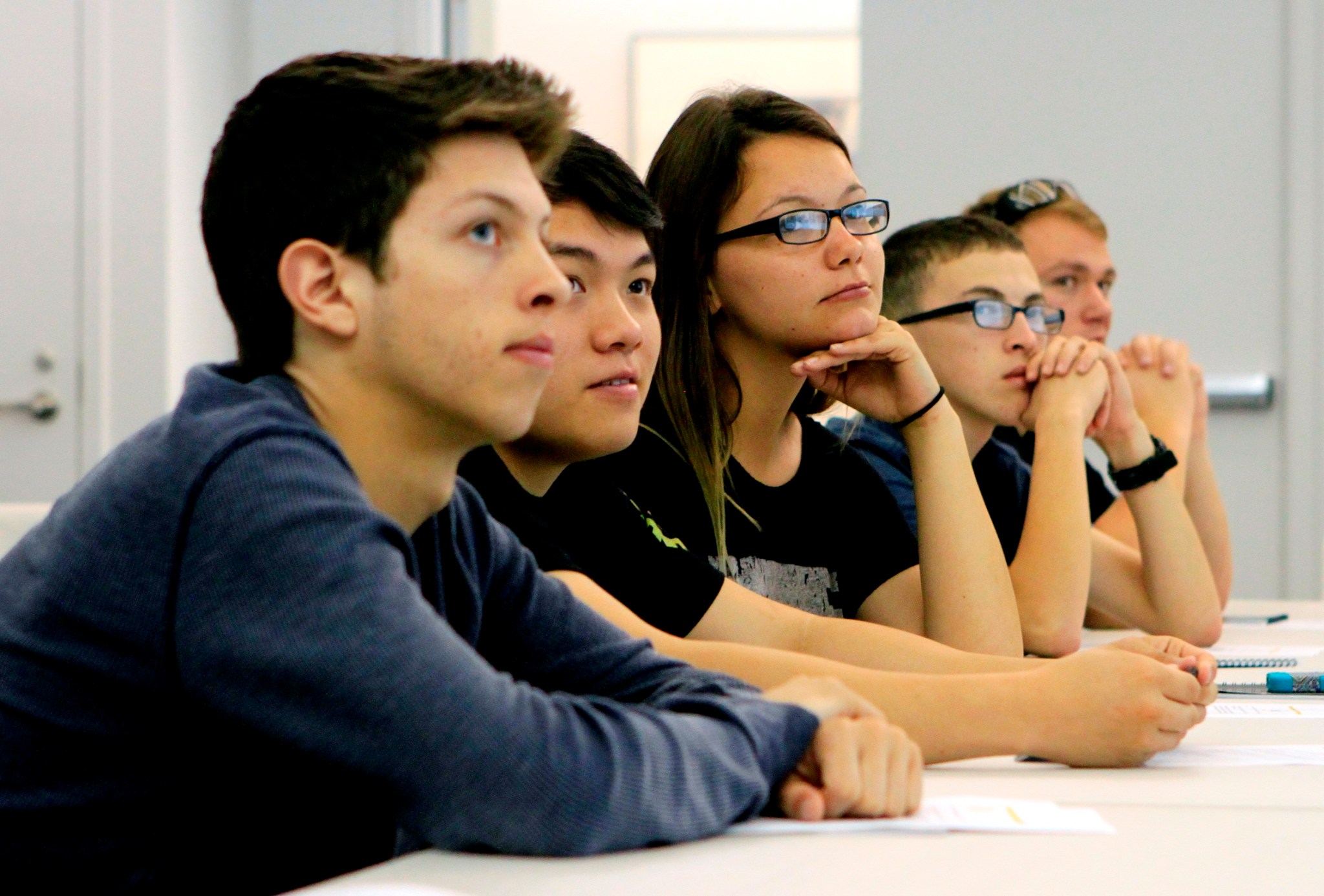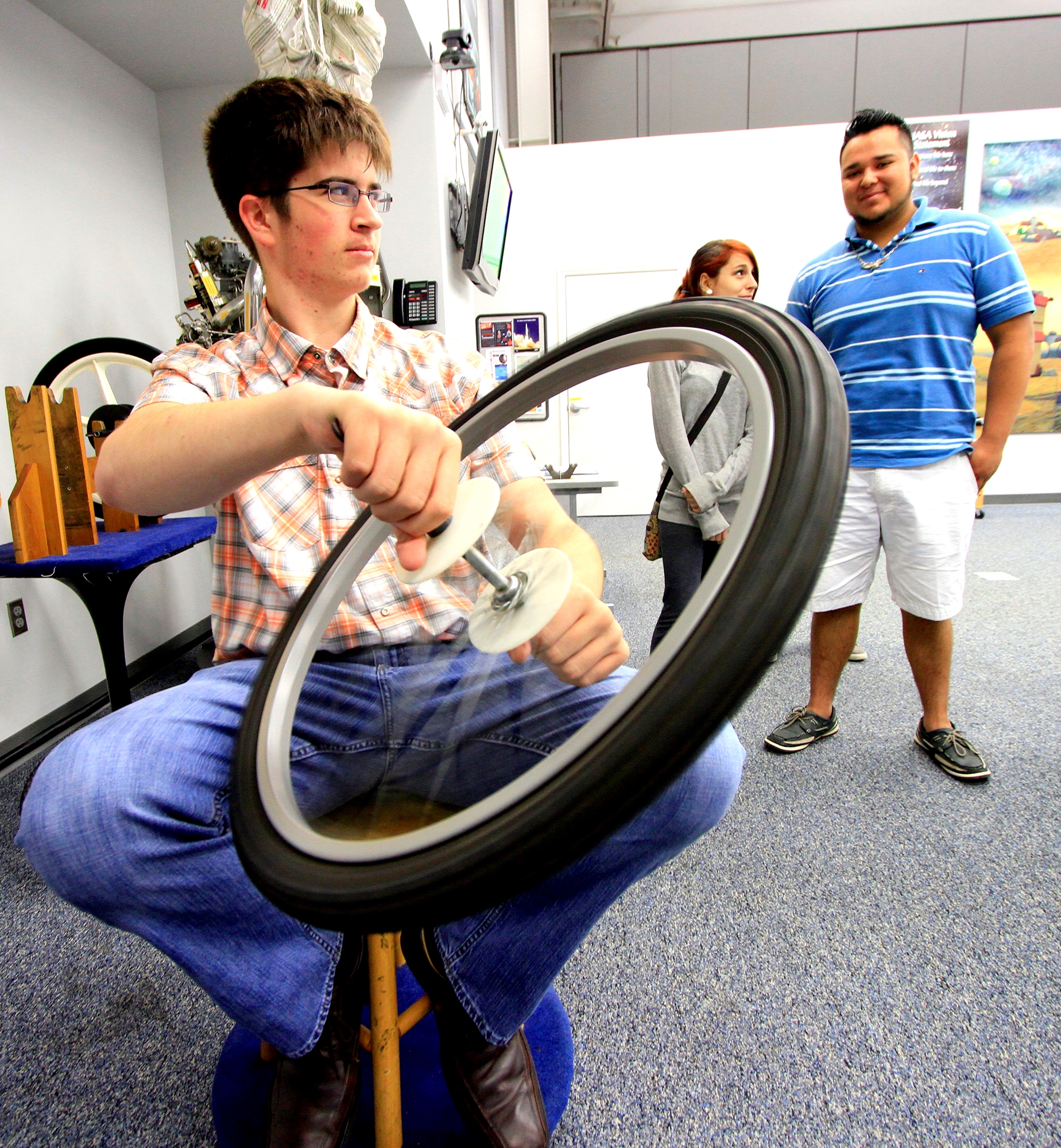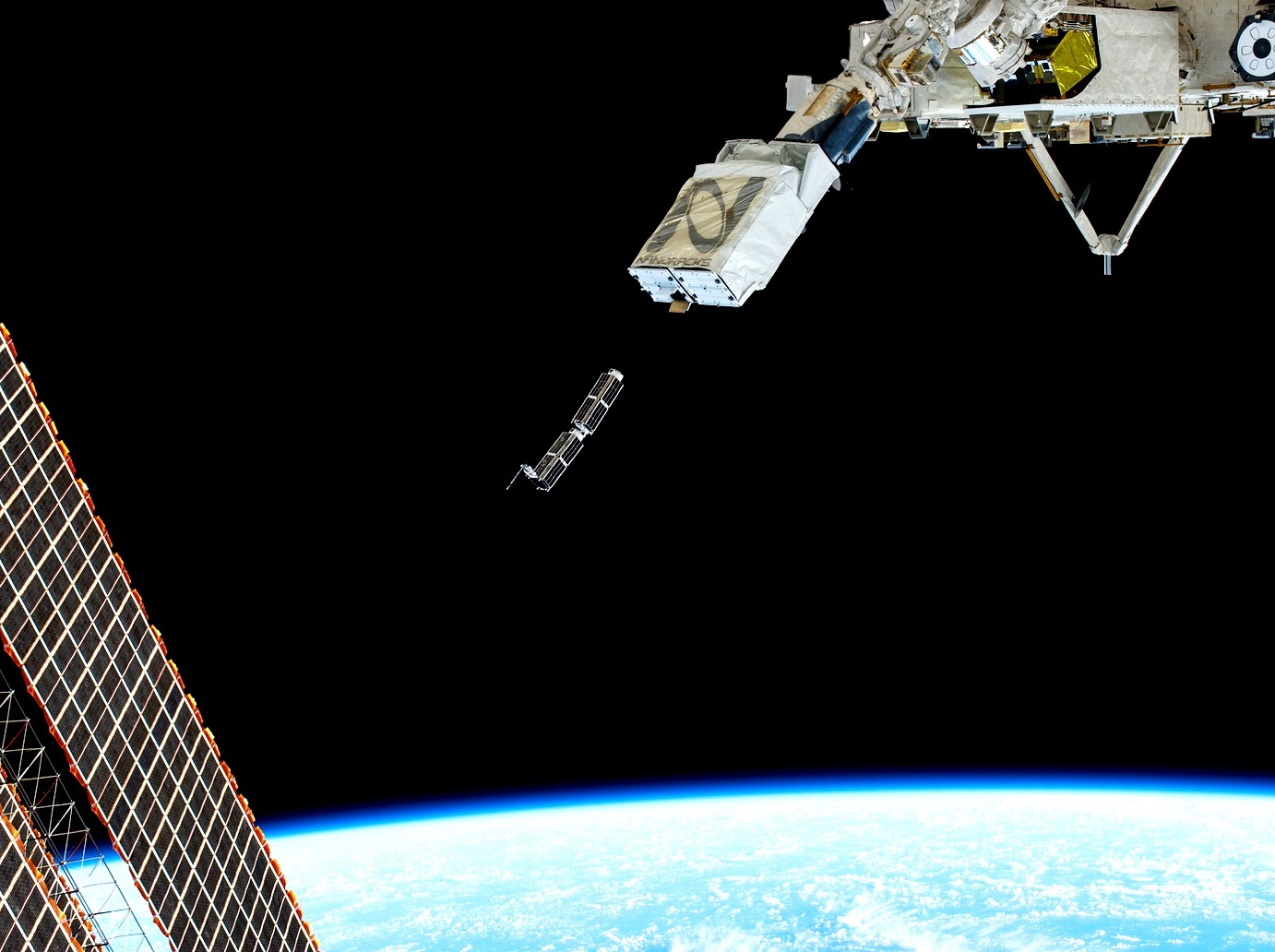By Bob Granath,
NASA’s Kennedy Space Center, Florida
During spring break, many young people head for the beach to check out the surf. On March 31, 25 students from Sebastian River High School in nearby Indian River County used their time off to travel to NASA’s Kennedy Space Center in Florida to learn more about exploring space.
At the spaceport’s Center for Space Education, they learned about careers involving research aboard the International Space Station (ISS) and participated in hands-on experiences about living and working in Earth orbit and beyond.
The program was part of an effort established by the Center for the Advancement of Science in Space, called CASIS Academy. CASIS is a nonprofit organization tasked with managing, promoting and brokering research aboard the International Space Station’s U.S. National Laboratory.
According to Nikki Hoier, an education specialist with CASIS Academy, the educational aspect of the organization provides speakers to make presentations about work on the ISS and provide an opportunity to tap into student interests and experiences. The academy’s objectives also fit with NASA’s goal to inspire and educate the scientists, technologists and engineers of tomorrow.
“In presentations like this, we get ISS investigators to talk about how technology being developed in space is a test bed for future deep-space exploration,” she said. “We give middle and high school students an opportunity to ‘get their hands dirty’ in demonstration projects. Hopefully, some of those who may not have been considering science or engineering as a career will want to go that way and further their education.”
Throughout its history, NASA has emphasized the need to inspire and engage students in STEM — science, technology, engineering and mathematics, leveraging the agency’s unique mission and research.
“We invited Twyman Clements, president and chief executive officer of Space Tango in Lexington, Kentucky, to talk about developing student research projects that can be launched to the space station,” Hoier said. “He wants to see middle and high school students get involved in projects such as learning in just one hour how to build a small satellite.”
Space Tango is a commercialization partner for Kentucky Space, a non-profit enterprise involving a consortium of universities, as well as public and private organizations dedicated to designing and leading innovative space missions within realistic budgets and objectives.
“An artificial satellite is any human-built object placed in orbit around any celestial body,” Clements said in describing to the students the basics of spacecraft circling Earth or other planets. “Basically, satellites do two things — make measurements and communicate.”
Artificial satellites are distinguished from natural satellites such as the moon which orbits the Earth.
Clements explained that since the earliest satellites in the 1950s, their work has become much more sophisticated. Orbiting spacecraft today are used for a large number of purposes such as satellites for Earth observation, communications, navigation, weather and research. Additionally, the International Space Station is the largest satellite ever built.
One of the programs Clements has worked on in collaboration with Kentucky Space is CubeSats. The organization is among those designing, building and operating these small research satellites. The first orbital CubeSat spacecraft launched by Kentucky Space was KySat-1, which flew as part of the NASA Educational Launch of Nanosatellites, or ELaNA, program. One element of KySat-1 is a camera. Its images are used in classrooms supporting outreach to Kentucky students in kindergarten through 12th grade.
ELaNA is managed by NASA’s Launch Services Program at Kennedy. CubeSats are built in academic settings as an educational tool and to encourage interest in STEM education. The satellites are approximately four inches on each side, have a volume of about one quart and weigh no more than 2.2 pounds. Many have been delivered to the ISS and deployed from one of the station’s robotic arms.
“In presentations like this we have seen students become interested in technology, science and engineering,” Hoier said. “It’s great to witness kids listen, see what’s out there and start to ‘connect the dots.’ “
During their visit to Kennedy, the Sebastian River students broke into two groups. Half of the students participated in Clements’ presentation and the other a demonstration called “Living in Space.” After about an hour the students changed places.
Jen Hudgins, an education specialist with the Astronaut Memorial Foundation, focused on how ISS crews are working off the Earth, for the Earth.
“I spoke about what it’s like to live and work in space,” she said. “The presentation covered research going on aboard the space station and the fact that Scott Kelly recently went up to spend an entire year on the ISS. We want to learn more about how the body responds to microgravity, and we want to know about work we can do in that environment.”
On March 27, American astronaut Kelly and Russian cosmonaut Mikhail Kornienko launched to the ISS, planning to stay for twice as long as a typical crew. Researchers expect the one-year mission to yield beneficial knowledge on the medical, psychological and biomedical challenges explorers may face as part of NASA’s Journey to Mars.
“We also explain our new programs coming on-line such as the Space Launch System and Orion,” Hudgins said. “I talk about the effort to reach Mars and what is needed to get there.”
NASA’s SLS is a new heavy-lift rocket, more powerful than any previously built. SLS will be capable of sending humans aboard the agency’s Orion spacecraft to deep-space destinations such as an asteroid and Mars.
Hoier noted that after the students had lunch, they toured Kennedy’s visitor complex during the afternoon.
“When the class, teacher and chaperones boarded their bus for home, all were happily tired from both their experiences and exploring the exhibits,” she said. “Many students declared the day would be remembered forever.”
According to Hudgins, the experience is all about encouraging STEM education.
“We want to give the students an idea of all the disciplines it takes to build a rocket or satellite,” Hudgins said. “Hopefully, we’ll inspire them to enter one of those fields.”





























